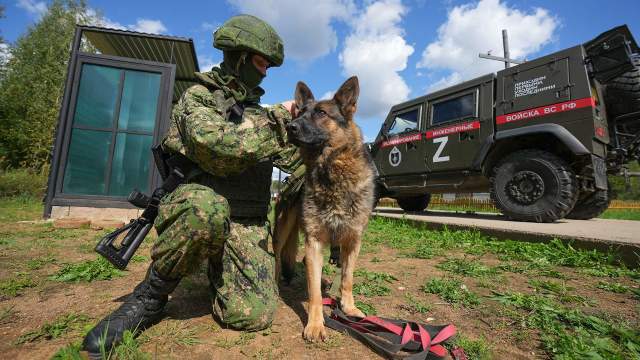How are four-legged sapper assistants trained and prepared for service
Mines and improvised explosive devices are increasingly being used in numerous wars and armed conflicts. As a result, whole countries are littered with these "infernal machines". Only since the beginning of the special military operation, Russian sappers have cleared several hundred square kilometers of Ukrainian mines. And this is not even half of the dangerous territories. The most important assistance to the sappers is provided by mine-searching dogs. The correspondent of Izvestia visited the Interdepartmental Training Center of the Engineering Troops and saw with his own eyes how the training of four-legged "mine detectors" is going on, and also learned why dogs are much more effective than any technical means.
Mine Warfare School
— There are already a lot of technical means in the world for finding ammunition, but a dog is a universal: she can smell it regardless of the appearance of the explosive device. Iron, wood, plastic — she doesn't care what to look for," Viktor, the commander of the department of counselors of service dogs, tells us.
The 66th Interdepartmental Training Center of Engineering Troops is a unique military unit. It trains specialists capable of finding and neutralizing various explosive devices — from conventional anti-personnel mines to homemade "infernal cars". Therefore, the emblem of the 66th MUTS depicts a sword cutting a grenade with a fuse.
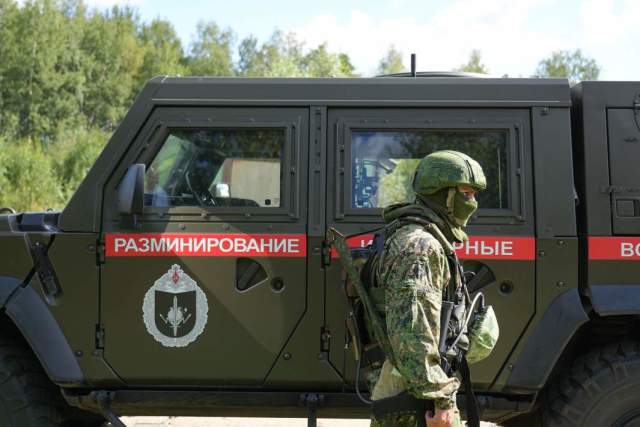
Photo: IZVESTIA/Dmitry Korotaev
Image source: iz.ru
The center is equipped with the latest technology. For example, there are special towns simulating combat positions, various man-made objects and residential areas. There are also samples of weapons and military equipment and even civilian cars. Special classes and sites where military personnel are trained to operate sophisticated high—tech equipment - gas analyzers, mine detectors and even sapper robots.
And of course, in the 66th IUC there is a huge database of various explosive objects and explosive materials. With its help, future specialists learn to look for explosive devices and, of course, to neutralize them as safely as possible for themselves and others.
One of the most important areas of the center's work is the training of mine—hunting dogs and their counselors.
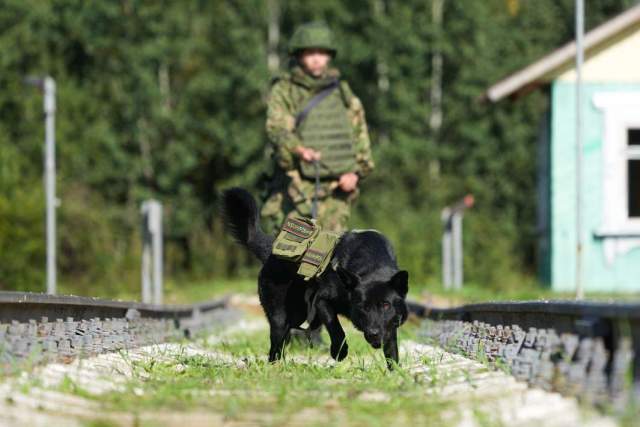
Photo: IZVESTIA/Dmitry Korotaev
Image source: iz.ru
— Technical search tools are highly specialized, — says Victor. — Metal detectors work by iron, gas analyzers — by smell. But a dog is a tool for a comprehensive search. She is looking for even the smallest odor concentrate coming from underground at a depth of up to 60 centimeters. This is already more perfect than a mine detector and a gas analyzer. And it is not as difficult to work with it as with technical means.
Combat pair
We are in a special training camp where mine-hunting dogs are trained. Now two young "fighters" are training at the training ground — a dog named Ursik and his fighting girlfriend Rika. The rest of the tailed cadets have walking time. The dogs, along with their guides, walk in a special circle. The discipline here is iron — no one breaks from the leash. They can only squint gently in our direction, nothing more.
— In the engineering troops, we use mainly German Shepherds. These are versatile dogs, smart, — says the specialist of the 66th MutS. — There are also Labradors. They have a very well developed nose at the genetic level. They also work as diving dogs. Belgian Shepherds are also used as search engines, but they have more aggressive behavior.
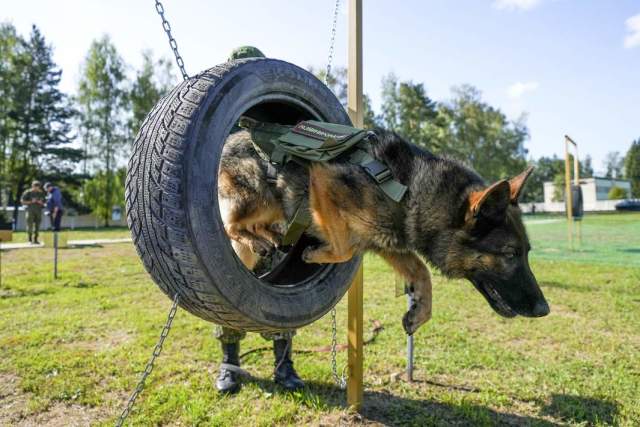
Photo: IZVESTIA/Dmitry Korotaev
Image source: iz.ru
Ursik and Rika are still young "cadets". One is two and a half, and the other is two years old. According to the specialists of the center accompanying us, it takes several years to prepare a mine-hunting dog. First, she is taught skills from the general dog management course. It can take up to six months, depending on the skills of the dog handler. In order for the dog to be ready to act in combat conditions or on special tasks, it takes at least another year of daily training.
— Ursik is still young. In the morning, until all the "demons" come out of him, until he runs and plays enough, he does not start working," his guide laughs.
So the dog really wants to talk and play with us. His favorite toy is a red rubber ball. At some point, the dog comes up, lies down on my legs and pulls his muzzle, with a ball clenched in his teeth. So he offers me to play with him — to start pulling out the toy, and he will resist.
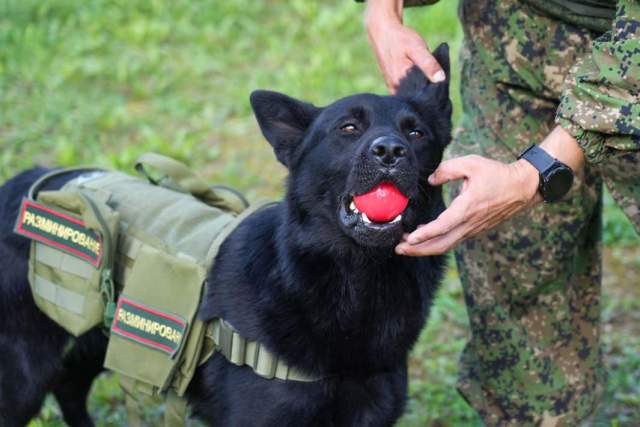
Photo: IZVESTIA/Dmitry Korotaev
Image source: iz.ru
— Ursik feels that you are nervous. Your adrenaline is pumping and your heartbeat is getting faster. And he wants to help relieve stress so much," her guide explains the dog's behavior to me. Indeed, just a few minutes before, I had experienced a nuisance.
But Ursik's partner, Rika, is more shy. She clings to her guide, and she is very confused by the TV camera. Running through the obstacle course, Rika constantly squints at this strange and frightening object and even tries to run away from it.
A "boy" and a "girl" always work in a pair.
— If the dogs are of the same sex, it causes a conflict between them, — Victor tells us. — And if a "boy" and a "girl" work together, it is easier to perform tasks. You can keep them together, you can walk next to them — they will not have any aggressive interest in each other. In general, it is easier to train "girls". There will be intense contact between the male trainer and the male dog at work.
The Way of the Warrior
Ursik and Ricky's training today is quite intense. First they have to go through a special obstacle course. Then separate work on a training minefield, then on an object simulating a railway, and then on mock-ups of equipment. At the end, both dogs will take part in a comprehensive training with the soldiers of the mine clearance group.
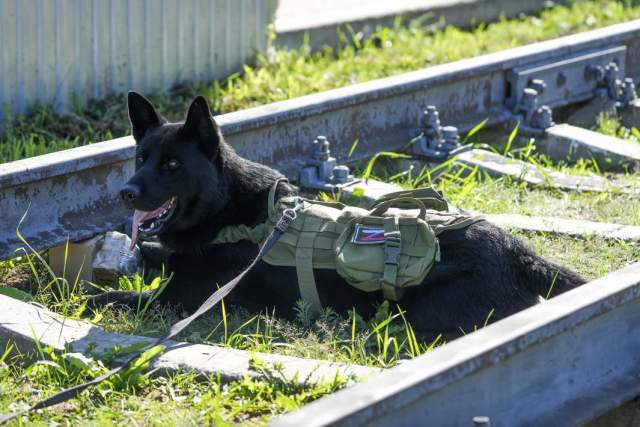
Photo: IZVESTIA/Dmitry Korotaev
Image source: iz.ru
Mine-hunting dogs work in difficult conditions, including under enemy fire. Therefore, they must have the skills to overcome various obstacles and at the same time not break away from their guides.
The obstacle course for four-legged mine detectors is similar to the one that is being built for people. These are various narrow bridges, a stretched wire under which you have to crawl, stairs, as well as walls where you need to jump.
An important task is to teach dogs not to be afraid of explosions and shots.
— Any extraneous noise can prevent the dog from working, — Viktor, the commander of the department of counselors of service dogs, explains to us, — We teach the dog not to be afraid of explosions, for example, small pops of firecrackers or ringing blows on some metal objects. The dog gradually gets used to annoying sounds next to him and at a distance. Ammunition is disposed of in our center. This helps to prepare the dog for loud explosions and other sounds. The shooting, which is carried out in our unit, also helps.
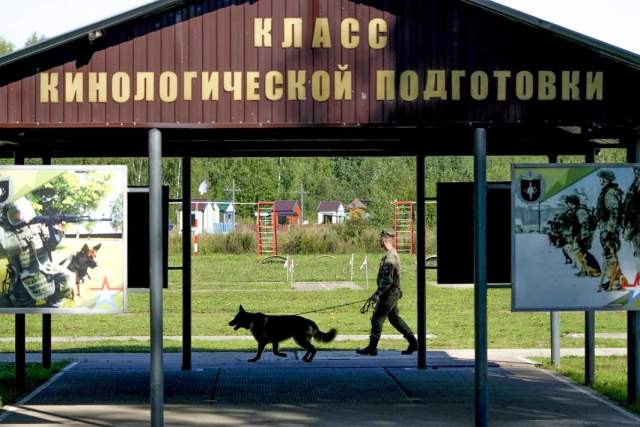
Photo: IZVESTIA/Dmitry Korotaev
Image source: iz.ru
Find and neutralize
We are walking along a special engineering polygon that simulates urban development. There are small residential buildings, outbuildings, cars. At this facility, mine clearance teams learn to work in urban conditions.
The squad consists of several fighters with mine detectors, as well as two mine-hunting dogs. The fighters carefully inspect the area. In case of a signal, a dog is sent to study a suspicious object. It also happens the other way around. The dog senses the mine earlier than the mine detector.
— In 2019, we went to tests with the Institute of Engineering Troops, when we invented a new gas analyzer that captures explosive molecules. Five mines were buried, the dog found everything. The device found only three," the military guide tells us.
Today, during training, a mock-up of a mine was hidden in the underwing of the car. Ursik felt the homemade device a little earlier than the fighter with the "Kite" mine detector, and began to attract the attention of the conductor. The group stopped and covered the sectors. Now it is necessary for the dog to confirm exactly that an IED is hidden in the car.
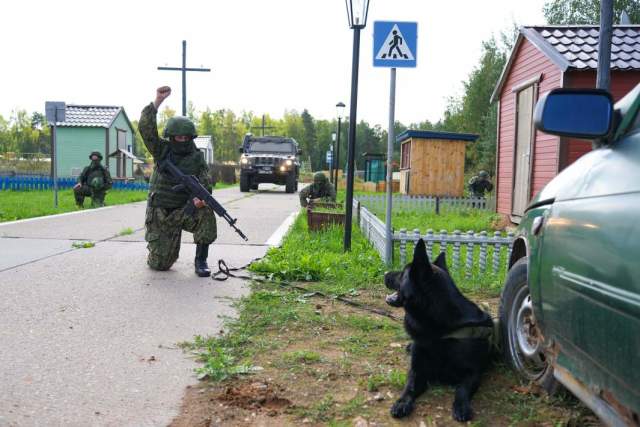
Photo: IZVESTIA/Dmitry Korotaev
Image source: iz.ru
Ursik carefully sniffs the front part and lies down next to the wheel. This means that the mine is hidden in this place.
— At this stage, the commander of the group enters the work. He examines the IED and decides what to do. To extract, to try to neutralize, simply to designate or undermine the object, — the specialist of the 66th IUC explains to us.
Ursik and Rika are just learning their specialty. But their four-legged colleagues are already performing combat missions. Russian mine-hunting dogs participated in the demining of the Syrian cities of Palmyra and Aleppo, helped the Lao military in search of mines in the jungle. And now they are working in the zone of a special military operation, where they are also saving the lives of civilians from mines and improvised explosive devices, which the Ukrainian militants put up with such pleasure.
Alexey Ramm
